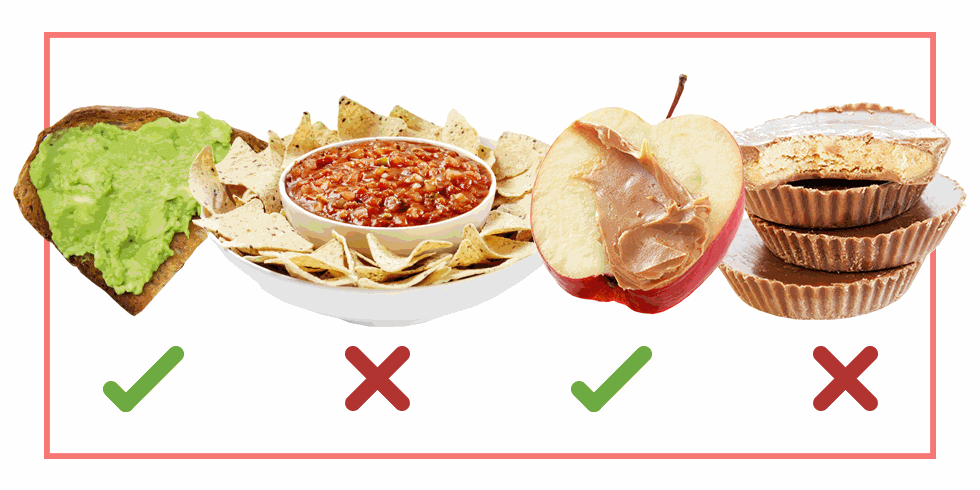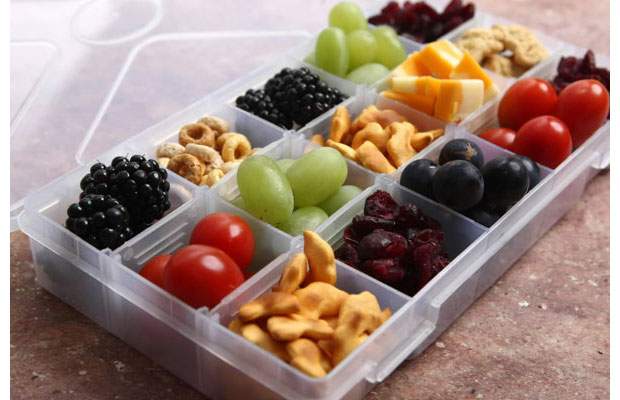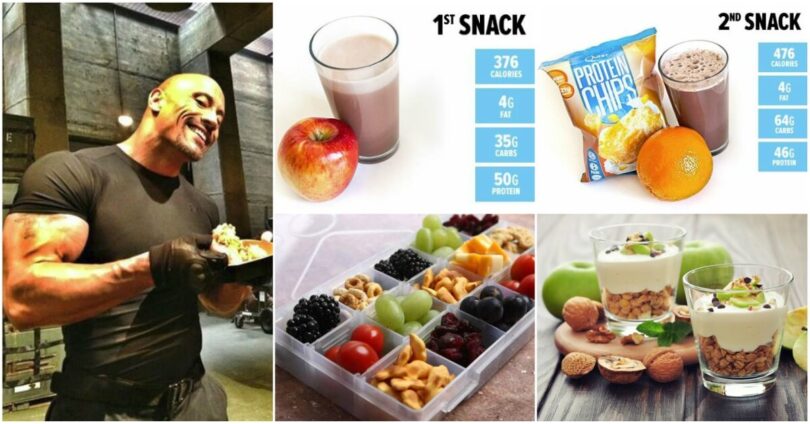So you’re starting out the 4 week lean diet plan, but that hunger is creeping in!
Don’t give in, instead, try these healthy snacks that’ll keep you satiated without undoing your fat loss efforts. When you have the right snacks available, you can curb cravings and provide vital nutrients to support fitness gains. Now who’s hungry?
Eating snacks with the right ratio of nutrients and with the right calories, will keep you energised and help you lose weight. Protein fuels the growth of lean muscle mass, which boosts metabolic rate and increases calorie burn. Fibre, helps improve digestion and keeps you from binging on fats and sugars. Smart choices will help your body operate at maximum efficiency.
Protein will satisfy you even longer when mixed with fat or fibre.
Below are a list of numerous snacks, along with 5 benefits and tips to help keep you committed and strong with your 4 week plan.

High-Protein Snacks
Whether your goal is to build muscle or lose fat, it’s essential to eat enough and eat clean. Stock up on these healthful staples and you’ll be less likely to sabotage your buff-to-blubber ratio. When you have the right snacks available, you can curb cravings and provide vital nutrients to support fitness gains. Now who’s hungry?
Edamame:
Edamame, or green soybeans, provide a mix of protein, slow-digesting carbs and fat to keep your energy levels steady. These verdant gems are also packed with important nutrients like folate, vitamin K, iron and magnesium.
Pumpkin Seeds (Pepitas):
These are full of whole-food protein, with about 7 grams per crunchy serving. None of their carbohydrates are sugar, making them an even better way to elevate protein content in salads, oatmeal, yogurt, or cottage cheese. You can turn to pumpkin seeds for a source of testosterone-boosting zinc.
Hard-Boiled Eggs:
Not just for breakfast, the egg has an abundance of branched-chain amino acids, providing a lot of muscle-building. Boil up a carton’s worth and stash them in your fridge for times when you feel hungry.
String Cheese:
Not just for kid’s, string cheese is a convenient way to boost your protein intake with little carbohydrate cost. Consider reduced-fat versions to keep the calories in check, but if you’re looking to gain mass, the extra calories in full-fat string cheese can help in your pursuit of size.
Cottage Cheese:
This spoon cheese is rich in casein protein, about 28 grams in a cup. Casein is a slow-digesting protein that supplies your growing muscles with a steady supply of vital amino acids. It makes a great bedtime snack, aiding recovery and preventing catabolism while you fast overnight. Cottage cheese is high in sodium, so compare nutrition labels to find brands that contain less.
Low-Carb Snacks
Celery:
Celery is 95 percent water, making it a perfect low-carb snack. Slice and add to salads or fill with nut butter for a snack that’s big on nutrition but low in processed carbs. Celery is a good way to obtain an extra dose of vitamin K.
In-Shell Pistachios:
Pistachios are packed with protein, monounsaturated fat, fibre and B vitamins. Buy them in the shell, the extra work of shelling the nuts can stop mindless overeating. Pistachios added to common carbohydrate-rich meals, such as rice and pasta, can significantly reduce the post-meal blood sugar spike.
Mixed Nuts:
Nuts like peanuts, cashews and almonds add more protein and healthy unsaturated fats to your diet. If you’re watching your sodium intake, look for packages labelled “unsalted.”

High-Fibre Snacks
Frozen Grapes:
Spread whole grapes in a single layer on a baking sheet, freeze until firm, and store in an airtight zip-top bag.These are great for a sweet snack to kill that sugar spike. Try using red grapes, which are higher in antioxidants than their green brethren.
Dried Fruit:
Dried fruit is ideal when you need a sweet fix or a shot of energy before hitting the weight room. The fibre favourably impacts blood sugar and appetite-regulating hormones compared to simple carbs, but the sugars still give you a boost.
Strawberries:
Strawberries supply the least amount of sugar making them a great option for satisfying a sweet tooth. Strawberries are a source of vitamin C, which may help reduce coming down with the sniffles.
Other Nutritious Snacks
Dark Chocolate:
Dark chocolate, the stuff with at least 60 percent cocoa content, has been linked to a reduced risk of heart disease. Because dark chocolate has a more intense flavor than the sugar-laden milk varieties, you’ll be satisfied with less.
Tomato Juice:
Tomato juice has less than half the sugar found in orange juice. Lower-sodium options help reduce the risk of water retention. Be sure that what you’re drinking is 100 percent vegetable juice and not a blend made with sugary fruit juices and sweeteners.
Apple slices with nut butter: Chop up an apple and eat it with two tablespoons of nut butters – almond, cashew, walnut or peanut are all fine but go for low sugar, whole options.
Beef Jerky: Beef jerky packs in the protein, you get around 30g per 100g serving and is virtually zero-carb.
Crudites and hummus: Dunk fresh, crispy celery, carrots, peppers or sugar snaps into this healthy chickpea-based dip. Check the label to make sure it’s not packed with salt.
Greek yogurt: It’s full of healthy minerals including calcium, phosphorous and potassium, packed with live bacteria to improve digestion and has twice the protein of regular yogurt, so it helps your satiety levels.
Guacamole: Make your own to avoid extra additives. Mash half an avocado and add a squirt of lime, a pinch of coriander and some chopped tomato.

1. Drink Water
Water is important in absolutely all aspects of fitness and nutrition. H20 is the medium in which most cellular activities occur, this includes the transport and burning of fat. In addition to this, consuming a lot of water can actually make you feel full meaning that you’re less likely to start snacking. Try to drink between 2 and 3 litres of water per day.
2. Reduce Starchy Carbs
Starchy foods, like pasta, bread and rice provides the body with more than it needs for glycogen stores and energy, anything that is left over will be stored as fat. A diet with a modest reduction in carbohydrates for eight weeks, means 11% less deep abdominal fat than those a lower-fat diet.
3. Five-A-Day
Vegetables are laced with nutrients, packing maximum nutritional value into minimal calories, leaving you more full on less calories. Try to consume five servings a day of vegetables (not including fruit). If you start working them into sandwiches, snacks and even junk food like burgers and pizza you can hit your quota with ease.
4. Don’t Rely On Fat Burners
While fat burners do help to reduce body fat they will not counteract poor eating habits. Unfortunately fat burners are not magical pills that shed the calories for you, they are to be used alongside a disciplined exercise and nutritional regime.
5. Limit Sugars
Taking in simple carbs (sugars) prior to training does replenish liver glycogen stores and muscle, but too much sugar consumed at other times of the day will be stored up as fat. Moderation is key, so limiting your intake of sugar to fresh fruit is advised most of the time. Also, remember the amount of sugar that can be found in certain beverages like fruit juice. Try to replace sugary drinks with water, coffee or tea (with no added sugar.)

